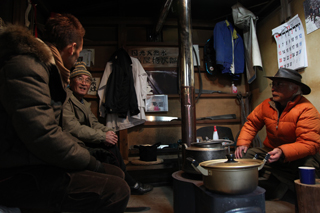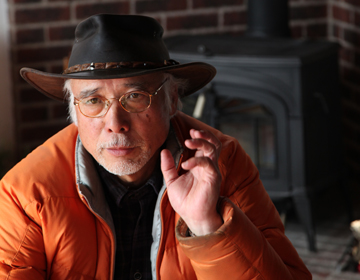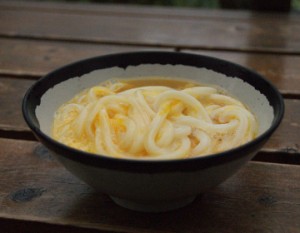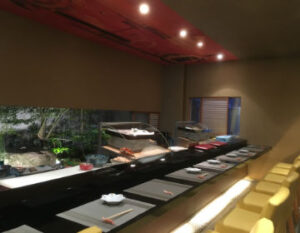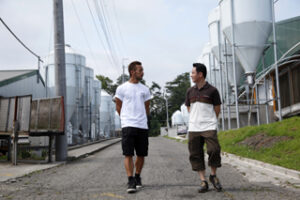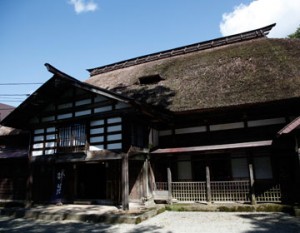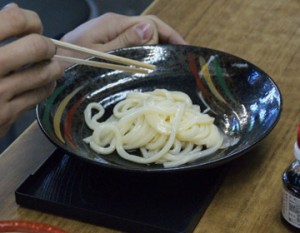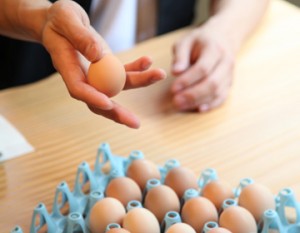Fluffy Shaved Ice
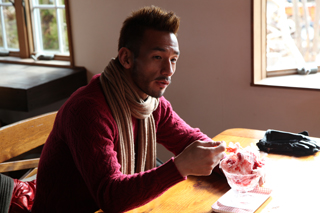
“Please have a taste.” A bowl of ”kakigori”(Japanese-style shaved ice) was served. You could feel the fluffy, not slushy sensation as soon as the spoon was dipped into the ice. “It’s like cotton candy”, commented Nakata. “When we use natural ice instead of ice from an ice-making machine, even ”kakigori” as fluffy as this doesn’t melt so easily”, says Yuichiro Yamada of Yondaime Koriya Tokujiro. This fluffy “kakigori” has been introduced on television and in magazines. It is so popular that in summertime, people line up in front of the shop. Yondaime Koriya means fourth generation ice vender. As the name indicates, Yondaime Koriya Tokujiro makes and sells natural ice. Unlike ice made by ice-making machines, natural ice made from mountain runoff water drawn into a pond and frozen by cold air in the open nature, is rich in minerals. The minerals give the water a subtle sweet flavor. But the biggest distinction of natural ice is its clarity. Unlike the opaque machine-made ice, the block of natural ice that we saw was so clear that you could almost see the other side.
Ice with Daily Lines
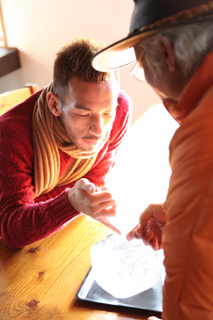
“We get lines like these in natural ice”, Yamamoto pointed out. There were actual lines in the ice. The lines are equivalent to annual lines in trees. “A line marks a layer of ice, freezing overnight. The next line is the part that froze during the next evening. ”Instead of annual lines, daily lines are carved in natural ice. Natural does not mean that ice can be left alone on its own. It needs to be nurtured and cared for daily.
Snow is the biggest enemy in making natural ice. When a blanket of snow covers the frozen pond, cold air cannot reach the ice. This prevents ice from becoming clear. And so, whenever it snows, snow must be ”shoveled”. Snow is shoveled away with quick motions throughout the large ice pond from end to end. Yamada says that he is quite anxious during the snowy season. On the day of our visit, a thin layer of ice was being shattered to be flushed away. By doing so, impurities are removed from the ice pond, making the ice clear. Nakata helped out with this routine, which was hard work. Using a long rod with a claw on the end, pieces of ice were drawn close and shattered. Ice is “nurtured” attentively by repeating such actions.
Passion Moves Minds
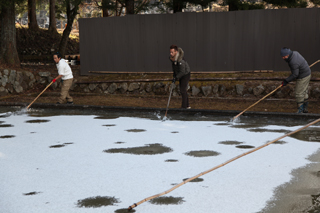
At present, there are only a few companies that produce natural ice in all of Japan. Although ice making was a popular business in Nikko from the olden days, there are only three businesses left. In 2006, former owner Yoshiara considered closing Koriya Tokujiro due to old age. But Yamada had a strong desire to preserve the culture of Nikko, and asked Yoshiara if he could succeed the business.
“I refused and said this job is too tough” recalled Yoshiara who showed up at the end of our visit. “But you let him succeed in the end. Why?” asked Nakata. “Uh, well, he was persistent.” Yoshiara laughed. In spite of being turned down many times, Yamada did not give up and visited Yoshiara repeatedly.
Yamada wished to preserve the culture of Nikko. But Yoshiara as a craftsman knew that work could not be succeeded without solid determination and passion. It took some time for the two to agree, but what brought the two minds together was “passion”.
